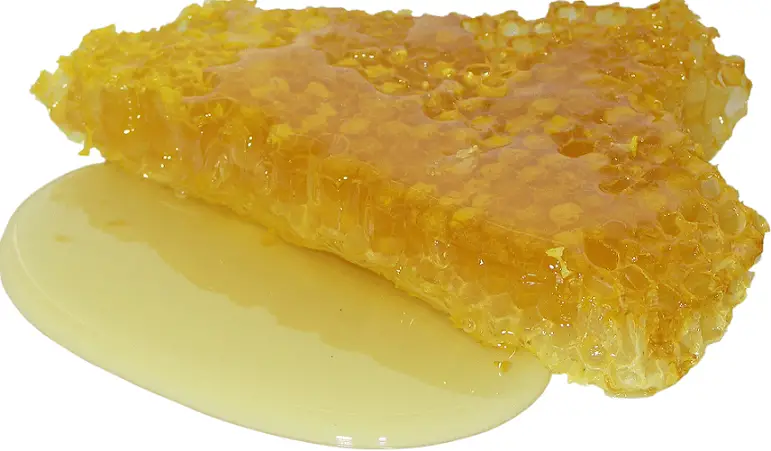
Modern mead making is still in its infancy, even though its one of the oldest alcoholic beverages in existence. But one thing is for sure, this traditionally light and subtle drink could also be robust and thick!
The key to making a mead thick is to increase the ratio of water to honey. Residual sugars after fermentation will create a sweeter more thick mead. Choosing lower tolerance yeast can also increase thickness since there will be more residual sugars.
Thickness in mead can be a tricky subject since there are a variety of factors and people have different preferences. Make sure you read more below to see some methods to create a thicker mead.
Make Mead Thick With More Honey
First and foremost the best way to make mead thicker is to increase the amount of honey that you are using compared to the quantity of water. This is typically done by manipulating the ratio of water to honey.
The typical ratio is 3 lbs of honey per each gallon of water. By increasing the amount of honey for each gallon you can increase the thickness of your mead.
Yeast Plays an Important Role
Depending on the style of yeast you have chosen your mead could turn out thicker and more sugary or dry and crisp. When choosing your yeast you will need to look at attenuation.
Attenuation simply means the percentage of sugar that a yeast will likely consume. This is not to be confused with flocculation which means the amount of yeast that will drop to the bottom, leaving a clearer liquid behind.
Particulates left in suspension such as yeast, fruit debris or sugar all contribute to the overall thick mouthfeel of a mead.
Beer Yeast in Mead
Beer yeast could make for a thicker mead since you can use a low flocculating and low attenuation yeast that could create thicker mouthfeel but with less alcohol.
This could be a cheaper route to take if you are not looking to spend a ton of money on expensive honey. Just remember there is an imaginary line between delicious and undrinkable.
If you are questioning using beer yeast in mead check out my article on using beer yeast in mead to gain some more information.

Back-Sweeten your Mead
Although you could decrease the amount of fermentation that is taking place, I’m sure none of you want that at all. You want to get that level as high as you can so you can enjoy your night.
Probably the best way to thicken the mead is to back-sweeten it. This can be done in a variety of ways such as:
- Adding juice
- Adding more honey
- Adding whole fruit
Traditionally you would want to add honey to back-sweeten since when you add anything else it becomes something different. For example, adding fruit will turn your mead into what is called a melomel.
The problem with back sweetening your mead is you have to pasteurize it first so that it does not ferment more. This means you can’t bottle condition your mead if you want it to be carbonated.
Thick Mead Styles
There are actually a lot of different methods when it comes to making a thick mead. Some of the more common ones I have come across include.
- Polish Mead
- Viking Blood or Melomel Style
- Braggot
- Cyser
Viking Blood
Viking blood is a cherry mead and it uses cherries to increase the level of sugar. Not only is it red in color but the addition of cherries it turns it its a more robust form of mead known as a melomel.
If you curious about learning how to make it check out the video below. CS mead and more does a great job of explaining how to create a sweeter thicker mead.
Polish Mead
Polish mead is probably the most interesting style of mead and by far the thickest. When it comes to brewing mead in Poland they don’t skimp on the honey.
The honey to water ratio of a Polish mead is typically higher than the suggested 3 lbs honey per 1 gallon of water. Instead Polish mead can approach levels upwards of 6 lbs of honey per gallon of water.
Polish mead is also nationally classified according to the amount of honey to water, and has different names for each classification.
- Csworniak
- Trojniak
- Dwojniak
- Poltorak
Poltorak is the Polish mead with the most honey content and Csworniak is the weakest and driest mead.
Polish mead can also be spiced or have fruit essence added. These additions are traditionally purely for flavoring otherwise they brink on the level of being called a melomel.
A word of advice when making a Polish mead is to be prepared for long wait times when it comes to adding more honey. Some Polish mead ages for multiple years.
Braggot
A braggot is a way to make mead thicker by allying with the craft beer industry. It is essentially mead mixed with beer to create a very refreshing beer or a thicker mead. They are traditionally light in body compared to the heaviness of a beer.
If you are interested in learning more about braggots I actually wrote about it a while back. Take a look!
The benefit of homebrewing a braggot over adding more honey, is you won’t need to add yeast nutrient and it will finish much more quickly than a pure honey mead.
Cyser
A cyser is a cross between a cider and mead. This is sort of like a melomel since you are adding fruit to the mead but also different.
The difference lies in the definition. Since a Cider can only be called a cider if it is made from apples or pears. If it is made from anything else it is not a cider.
So when it comes to mead a cyser can only be created from apple juice or pear juice.
Increase Perceived Thickness with Carbonation
Carbonation does a lot to change the flavor and mouthfeel of the beverage you are consuming. It could even make a mead seem thicker. However, its not actually making it thicker and there is a reason why its often not used in mead.
Carbonation can take away from many of the subtle flavors, and with honey water, the subtle flavor is very important. Of course if you decide to add more complex flavors, like fruit it can help make the mead really pop.
Carbonation can increase mouthfeel, but it should probably be done with mead that has more sugars to begin with. So it might actually not be a great substitute for adding higher concentrations of honey, but will kick it up a notch if your mead has higher levels of sugar already.
A better substitute for straight CO2 carbonation might be to add nitrogen to your mead to really thicken it up and smooth it out.
Make Your Own Thick Mead
Mead can be expensive, like a fine wine it has to be aged for a long time, and these long wait times can contribute to cost. This makes it a fun and frugal pastime for amateur meadmakers.
You might be thinking its hard to brew your own mead but in fact its incredibly easy, although patience is definitely required.
All you need to make your own mead is a few basic supplies. Along with water and honey.
What You Will Need
As far as supplies you don’t need much but I would suggest the homebrewstuff one gallon kit. It has everything you need to get started from the moment it arrives.
If you want to learn a bit more before getting started, check out make mead like a viking as its a very popular mead making book.
But, if you are trying to brew a thicker mead you might need some more honey than the kit contains. While you probably shouldn’t be mixing different types of honey on your first try you can certainly buy extra honey for your second go.
I suggest buying GloryBee since they have some amazing honey like this wildflower blossom honey. Wildflower is probably the best tasting honey you can get for a traditional mead.
GloryBee even have an organic honey from a tropical rain forest. If your interested in going organic with your mead, you might want to take the time to check out this article on organic mead or maybe bookmarking this page for later use.
